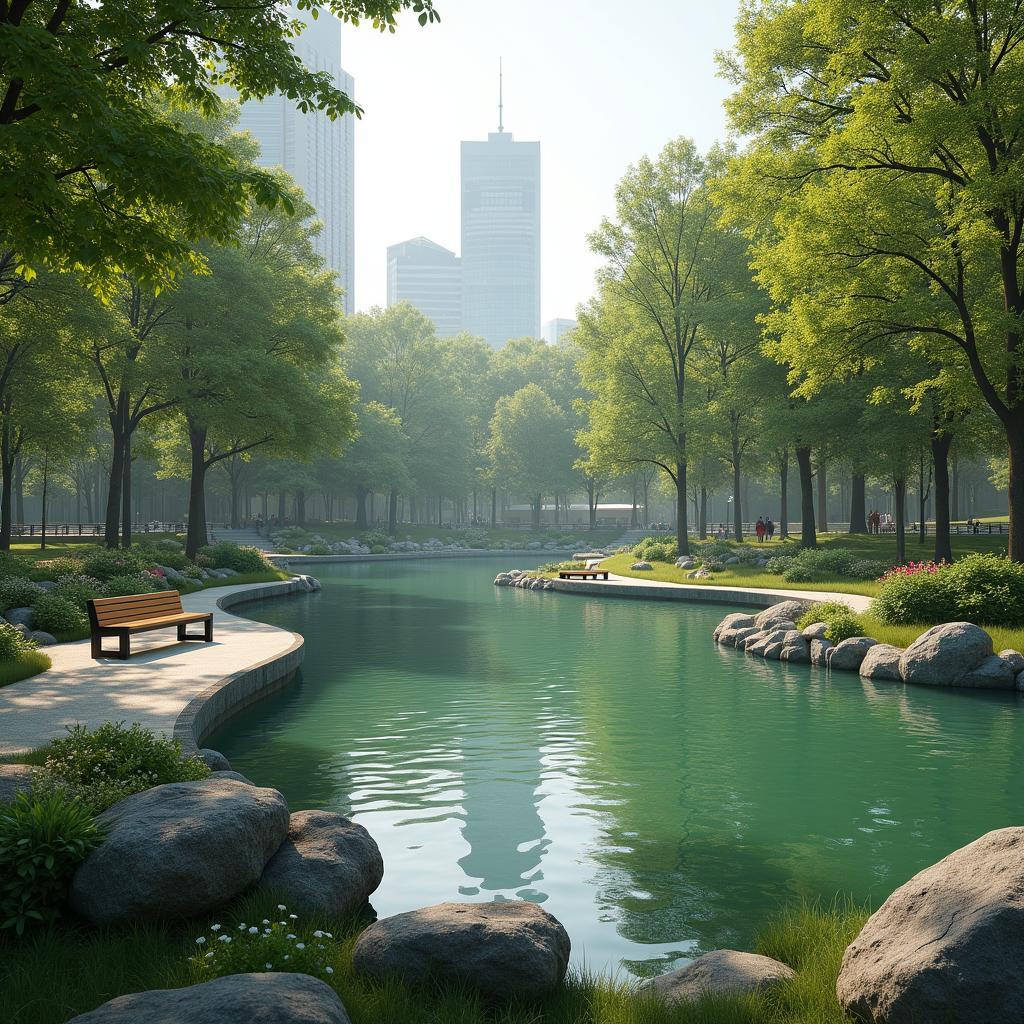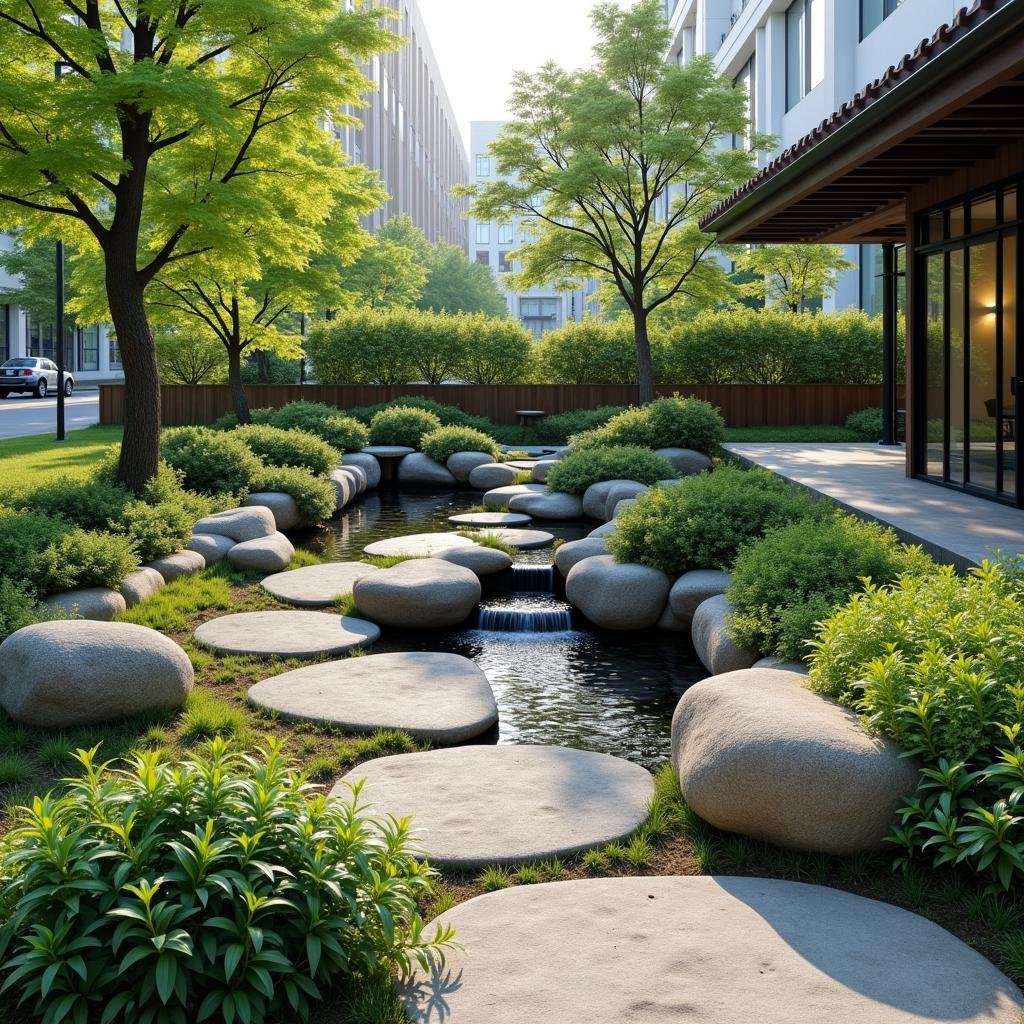In recent IELTS examinations, questions about mindfulness and meditation spaces have become increasingly common. The topic “describe a place in your city where you go to meditate or practice mindfulness” tests candidates’ ability to discuss personal experiences while demonstrating vocabulary related to relaxation, urban environments, and mental wellbeing.
 Tranquil meditation spot in an urban park showing peaceful natural surroundings
Tranquil meditation spot in an urban park showing peaceful natural surroundings
Part 1: Introduction and Interview Questions
Common questions in this section include:
- Do you often take time to relax during the day?
- What activities help you feel peaceful?
- Is it important to have quiet spaces in cities?
Sample answer (Band 8-9):
“I make it a priority to take short breaks throughout my day for relaxation. I find that practicing mindfulness for even just 15 minutes can significantly boost my productivity and mental clarity. I’m particularly fond of finding peaceful spots in urban parks where I can disconnect from the hustle and bustle of city life.”
Similar to describe a place in your city where people go to relax, having a dedicated space for meditation can greatly enhance your wellbeing.
Part 2: Cue Card
Describe a place in your city where you go to meditate or practice mindfulness
You should say:
- Where this place is
- How you discovered it
- How often you go there
- And explain why you find it suitable for meditation
 Urban meditation garden featuring zen elements and natural design
Urban meditation garden featuring zen elements and natural design
Sample answer (Band 8-9):
“I’d like to tell you about a hidden gem in my city – a Japanese-inspired meditation garden located in the heart of the central park. I stumbled upon this tranquil spot during one of my morning jogs last year, and it has become my sanctuary ever since.
What makes this place particularly special is its thoughtful design. The garden features a small koi pond surrounded by carefully manicured bonsai trees, and there’s something incredibly soothing about the sound of the water gently cascading over smooth stones. The atmosphere is enhanced by the strategic placement of wooden benches in secluded corners, offering perfect spots for contemplation.
For those interested in describe a nature spot in your city where you feel at peace, this garden exemplifies how urban spaces can be transformed into peaceful retreats.
I make it a point to visit at least three times a week, usually during early mornings when the garden is at its quietest. What I find particularly conducive to meditation here is the perfect balance between nature and urban accessibility. Despite being in the city center, the space manages to create an atmosphere of complete serenity.”
Part 3: Discussion Questions
- How has urbanization affected people’s ability to find peaceful spaces?
- What role should city planners play in creating meditation spaces?
- How do different cultures approach the concept of mindfulness?
Sample answer (Band 8-9):
“From my perspective, urbanization has created a pressing need for dedicated meditation spaces. While cities continue to expand, it’s become increasingly crucial to integrate green spaces and quiet zones into urban planning. This relates to describe a place where you go to meditate, as these urban sanctuaries serve multiple purposes in modern life.
I strongly believe that city planners should prioritize the incorporation of meditation spaces in their designs. These areas not only contribute to physical wellbeing but also play a vital role in maintaining mental health in urban environments.”
Key Vocabulary and Expressions
- Sanctuary /ˈsæŋktʃuəri/ (n): a peaceful place offering refuge
- Tranquility /træŋˈkwɪləti/ (n): the quality of being peaceful
- Mindfulness /ˈmaɪndfəlnəs/ (n): the practice of being aware and present
- Serene /səˈriːn/ (adj): calm, peaceful, and untroubled
- Contemplative /kənˈtemplətɪv/ (adj): thoughtful and quiet
Similar to Describe a place where you like to go to enjoy nature, using these expressions can help articulate your thoughts about peaceful spaces effectively.


